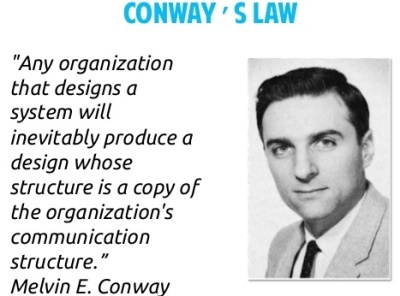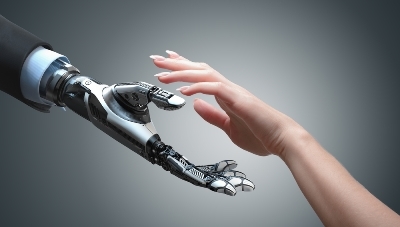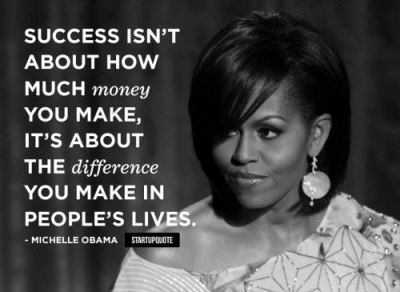Jeremie Averous's Blog, page 69
September 16, 2017
How Conway’s Law Shows How Systems Are Dependent on Human Organizations
Conway’s Law states that “organizations which design systems … are constrained to produce designs which are copies of the communication structures of these organizations“. This was stated in the context of computer programming in 1967 and still holds validity today.
 It just shows how difficult it can be to abstract oneself from the social organization in which we are embedded. As a result, even information and data treatment approaches will tend to reflect organizational and social boundaries.
It just shows how difficult it can be to abstract oneself from the social organization in which we are embedded. As a result, even information and data treatment approaches will tend to reflect organizational and social boundaries.
I find that this is particularly applicable in the context of large organizations, where taking a systemic view is generally difficult. Initiatives tend to develop locally and then to join at the organizational borders.
This law holds a lot of food for thought when it comes to designing data management systems in organizations. We should recognize it and at the same time iron out those interfaces that are really an issue for the effectiveness of the solution we are seeking.
In any case remember the social setting always influences the software system solution!

September 14, 2017
How the Fourth Revolution Will Create New Occupations
In this interesting Guardian post ‘The meaning of life in a world without work‘, Yuval Noah Harari explains that he sees a new class arise in a few decades: the useless class, spending their time deep playing in virtual worlds and creating no value to society. People who are not just unemployed, but unemployable.
 The lift operator, an occupation that was replaced by automation a while ago
The lift operator, an occupation that was replaced by automation a while agoI believe this is an erroneous vision. Again and again in the history of humanity, deep transformations of society have created situations where we could not envisage how we would keep busy and contribute to society in a few decades’ time. And it is true that in the transition a lot of people now past their 40’s might find it difficult to adapt to the new social conditions and find their place in the future society.
As a simple example, I wonder how the lift boys have been considering their replacement by automation!
However, again and again history has shown that people get busy and bring value to society in new ways that can’t really be fathomed a few decades earlier. Yes, probably the concept of industrial-age ‘job’ will disappear; a lot of current trades will become obsolete, and basic low qualification work will be replaced by robots. I remain quite optimistic however that we won’t end with a large percentage of people subsidized to do nothing while a minority would create social value. It is not the direction of history, and in spite of an increasing abundance I am sure that the same will happen again: our occupations of tomorrow can’t even be imagined, but they will be present.

September 12, 2017
How the Fourth Revolution Should Remain Human-Centered
While digitalisation is at the core of the Fourth Revolution, it is important to realize that the transformation of our society will remain human-centered.
 There is a definite anticipation that a lot of duties currently performed by humans will be automatized and that robots and algorithms will perform duties actually not possible until now. This is correct, but going beyond by believing that the Fourth Revolution will deploy without close relationship with the human element is not realistic.
There is a definite anticipation that a lot of duties currently performed by humans will be automatized and that robots and algorithms will perform duties actually not possible until now. This is correct, but going beyond by believing that the Fourth Revolution will deploy without close relationship with the human element is not realistic.
New robotic and data analysis capabilities should be seen as extending human reach and capability rather than replacing it. Of course this is meant in general. Some trades will definitely be replaced by robots. However, in general the tools that will be made available to us will extend our performance and the successful ones will be at our service. They will thus allow us to create revolutionary products and services.
Those successful services and concepts will be those that will leverage best the synergy between the human element and the fantastic new capabilities offered to us by free global communications and almost unlimited computing power. Complete robotisation that would not serve primarily to extend our capabilities is an illusion.

September 9, 2017
How the Computer Disappears as a Computer
In the Verge’s column ‘The disappearing computer – Tech was once always in your way. Soon, it will be almost invisible‘, Walt Mossberg makes the point that with the advent of wearables and the pervasion of computing power in our lives, computers will become invisible.
 Instead of the old fashioned desktop with its keyboard and screen, or tablet with its finger-touch interface; computers will be where we won’t see them anymore. And they will have even more influence in our lives.
Instead of the old fashioned desktop with its keyboard and screen, or tablet with its finger-touch interface; computers will be where we won’t see them anymore. And they will have even more influence in our lives.
“ I expect that one end result of all this work will be that the technology, the computer inside all these things, will fade into the background. In some cases, it may entirely disappear, waiting to be activated by a voice command, a person entering the room, a change in blood chemistry, a shift in temperature, a motion. Maybe even just a thought. Your whole home, office and car will be packed with these waiting computers and sensors. But they won’t be in your way, or perhaps even distinguishable as tech devices.
This is ambient computing, the transformation of the environment all around us with intelligence and capabilities that don’t seem to be there at all.”
This of course gives quite some food for thought. There will be advantages and drawbacks from this situation. And I guess more advantages than we can envisage today.

September 7, 2017
How to Overcome the Curse of Self-Interruption
We have increasingly a hard time to focus on something even when it is important. That point is very well developed in the Nautilus paper ‘Are You a Self-Interrupter?‘.
 Studies show that we are today constantly multi-tasking, interrupted and quite never alone with our thoughts (are there is always the temptation of checking out our devices). For example, a study has shown that “Shockingly, students could not focus for more than three to five minutes even when they were told to study something very important“!
Studies show that we are today constantly multi-tasking, interrupted and quite never alone with our thoughts (are there is always the temptation of checking out our devices). For example, a study has shown that “Shockingly, students could not focus for more than three to five minutes even when they were told to study something very important“!
And more generally, “One interesting aspect of this penchant for combining tasks is that we seem to have lost the ability to single task. Glance around a restaurant, look at people walking on a city street, pay attention to people waiting in line for a movie or the theater, and you will see busily tapping fingers. We act as though we are no longer interested in or able to stay idle and simply do nothing.”
We need to consider this issue – close to a mental health issue – and develop disciplines to take the benefit of connectivity while making sure we still spend enough time with ourselves. It will take time for this to become standard, but we can already recognize at the individual level the need for some effort.

September 5, 2017
How to Define Personal or Organizational Success
Michelle Obama is often quoted to have said: “Success isn’t about how much money you make, it’s about the difference you make in people’s lives.”?
 This is quite a powerful quote with, I find, a very deep meaning.
This is quite a powerful quote with, I find, a very deep meaning.
And this approach is both applicable to individuals and to organisations.
The foremost aspect is that what is important is to make difference in other peoples’ lives and not just in one’s own. Making this difference can be direct but also indirect for example through setting an example or an inspiration for others to follow.
An truly, at the end of the day, that’s what is important in one’s life.

September 2, 2017
How To Decide on the True Importance of a Decision
We take multiple decisions daily. Some small, some really important. How can we discriminate? It is quite simple actually – those that are important are those that have significant consequences. And often, long term consequences.
 Reviewing the potential consequences of a decision is a good way to weight their importance and the amount of time and effort that needs to be spent taking the decision. It is an excellent way to discriminate where to put the emphasis.
Reviewing the potential consequences of a decision is a good way to weight their importance and the amount of time and effort that needs to be spent taking the decision. It is an excellent way to discriminate where to put the emphasis.
Unfortunately we all encounter in our lives people that get that priority in reverse. They spend huge amount of time and effort agonizing over decisions that have very little consequences. And then, maybe out of exhaustion, they don’t consider properly those really important decisions.
Think first about the consequences of the decision you are about to make. Depending on those consequences, allocate the right effort to the decision.

August 31, 2017
How Critical Developing Artificial Empathy Is
I strongly recommend reading Charlene Li’s post on ‘Artificial Intelligence is Nothing Without Artificial Empathy‘.
 Her point is that “if we want our AI to truly understand and engage with us, it will need to develop “artificial empathy.” Artificial empathy is possible only if true empathy and the desire to understand customers lies at the center of the algorithm’s design.”
Her point is that “if we want our AI to truly understand and engage with us, it will need to develop “artificial empathy.” Artificial empathy is possible only if true empathy and the desire to understand customers lies at the center of the algorithm’s design.”
Of course this has not been taken into account at all in the first Artificial Intelligence algorithms design, and that probably needs to be fixed in a second generation of algorithms.
I find this idea of artificial empathy quite troubling and transforming, in any case worth following up for the future. It definitely gives a new viewpoint into the development of Artificial Intelligence.

August 29, 2017
How People That Move Beyond Conformism Are Hated by Others
Those that remain conformists and stayed at their place have a tendency to hate those that have moved on to new things. It is a constant law.
 Samuel Maverick
Samuel MaverickMy guess is that this happens in great part because of jealousy, added to the fact that a group of people always tends to reject weirdos that do not follow the conformist behavior.
Of course there are many examples of mavericks being finally hailed at heroes but that always comes after many years of rejection and hatred. And that concerns only a minor fringe of renegades.
Interestingly, ‘maverick’ as a term comes from Samuel Maverick who refused to brand his cattle in 19th century Texas and was thus considered badly by his neighbours.
So if you feel strong rejection from the social body surrounding you, it may be because you are a maverick. Don’t let yourself be impressed. That’s part of the game. And move on!…

August 26, 2017
How We Can Protect our Business from Competition in the Future (the Moat)
In ‘The New Moats: Why Systems of Intelligence™ are the Next Defensible Business Model‘, the author Jerry Chen makes the point that traditional defensive moats around businesses are getting obsolete and that the new moat is around intelligent technology.
 A Moat Around My Castle
A Moat Around My Castle“Companies that focus too much on technology without putting it in context of a customer problem will be caught between a rock and a hard place?—?or as I like to say, between open source and a cloud place”
Jerry Chen goes on explaining that he believes the new competition defences will be built around systems of intelligence that can combine several data sources to create substantial value.”In all of these markets, the battle is moving from the old moats, the sources of the data, to the new moats, what you do with the data“.
Personally I agree half-way, in particular because Jerry Chen places a lot of expectations on Artificial Intelligence. It might evolve that way, but for the moment, from my experience trying to create value-added applications for organizations, it is the engagement of the users around the data that creates value. The meaning is given by the experience of the users (although this might need to be facilitated and supported to properly define those items of value).
Yes, future defences to competition will be in clever data meaning development. But let’s not forget the engagement of the people around the data-set and the softer component of value creation. Here lies the real value of the future.




